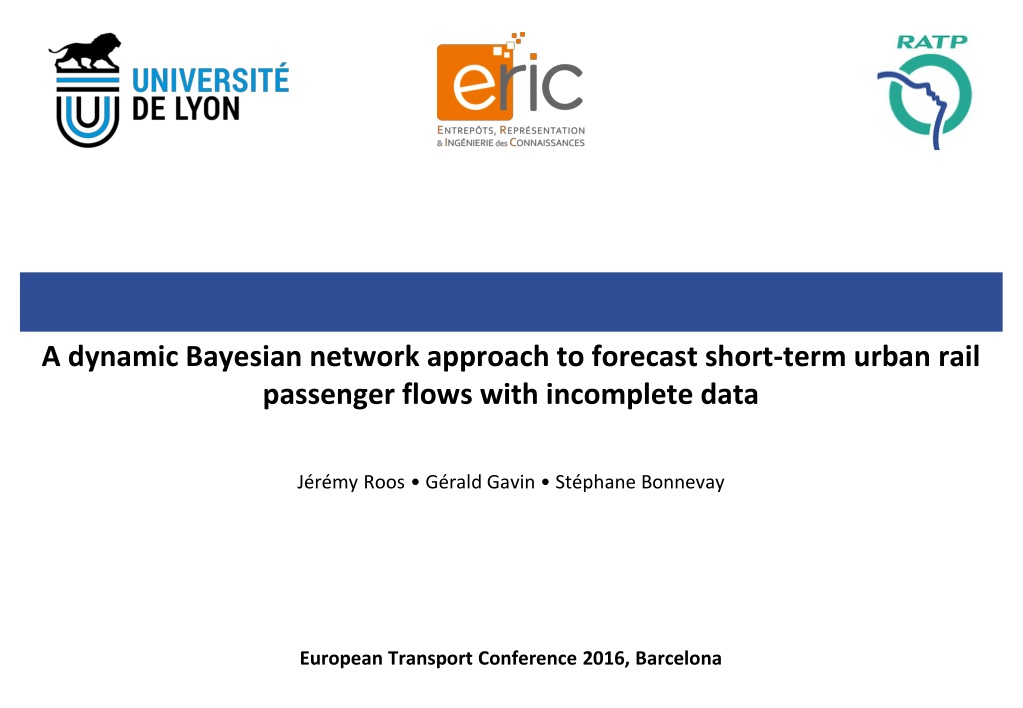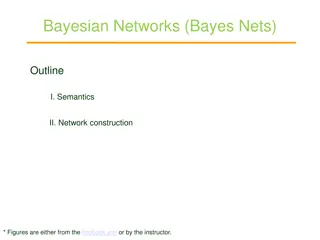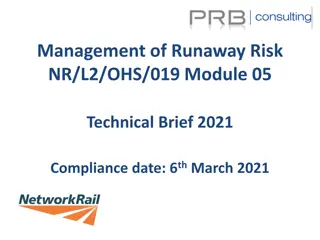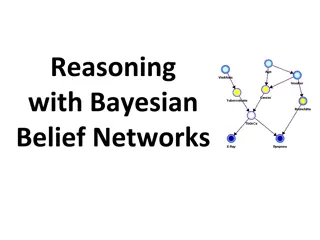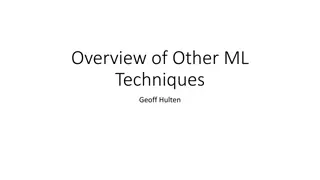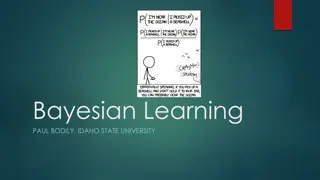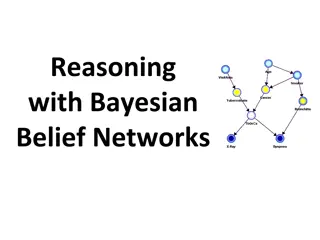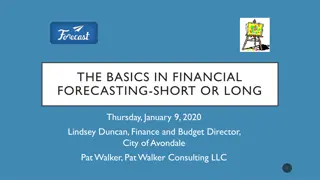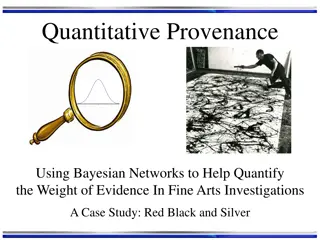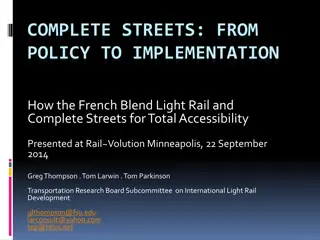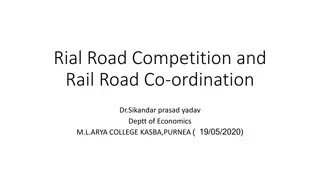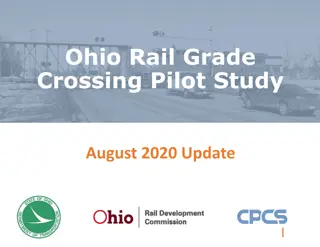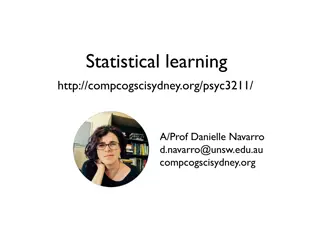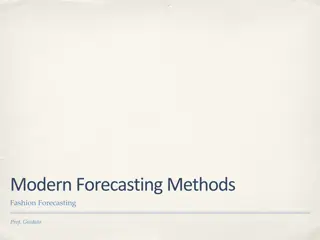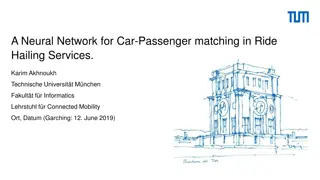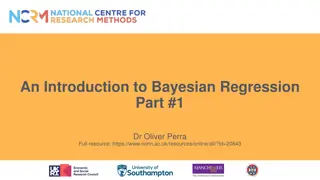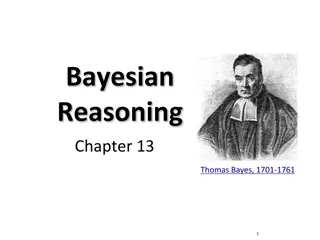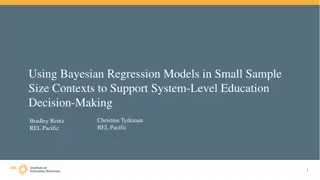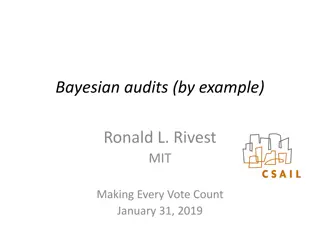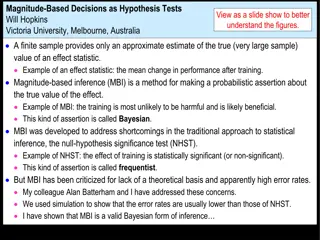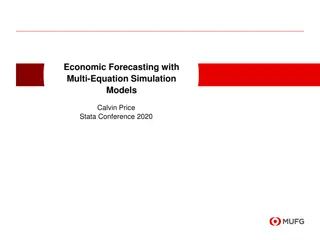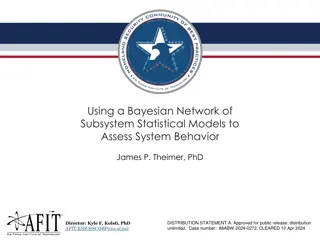Forecasting Short-Term Urban Rail Passenger Flows Using Dynamic Bayesian Networks
A study presented a dynamic Bayesian network approach to forecast short-term urban rail passenger flows in the Paris region. The research addresses the challenges of incomplete data, unexpected events, and the need for real-time forecasting in public transport networks. By leveraging Bayesian networks, the study demonstrates the ability to model conditional dependencies between variables and derive causal relationships to enhance forecasting accuracy in the face of missing data.
Download Presentation

Please find below an Image/Link to download the presentation.
The content on the website is provided AS IS for your information and personal use only. It may not be sold, licensed, or shared on other websites without obtaining consent from the author. Download presentation by click this link. If you encounter any issues during the download, it is possible that the publisher has removed the file from their server.
E N D
Presentation Transcript
A dynamic Bayesian network approach to forecast short-term urban rail passenger flows with incomplete data J r my Roos G rald Gavin St phane Bonnevay European Transport Conference 2016, Barcelona
Contents 1. Context and problematic 2. Modelling approach 3. Large-scale experiment 4. Conclusion and references 2
1. Context and problematic RATP Main public transport operator in the Paris region 16 metro lines Sections of 2 RER lines (commuter rail) 8 tramway lines More than 350 bus lines 3 billions travels per year 3
1. Context and problematic Industrial context Current models: assessment of the long-term effects of infrastructure/transport policy changes Models not designed for short-term forecasting Unexpected/non-recurrent events not taken into account: Service disruptions Unplanned closures of stations Crowd-attracting events Diversity of data sources Diversity still untapped partial view of the mobility Failures/lack of collection systems incompleteness 4
1. Context and problematic Problematic Harnessing of the diversity of data to forecast the short-term passenger flows Many applications in transport system management: Operation planning Passenger flow regulation Passenger information Analysis of travel bahaviour Various methods in the literature but few applications to public transport networks Necessity to forecast with missing data Few methods proposed in a real-time setting 5
2. Modelling approach Bayesian networks Representation of the conditional dependencies between random variables ? ?1,?2, ,?? = ? ?=1 ? ???? ?? Ability to forecast in case of missing data High modularity Easy interpretability 6
2. Modelling approach From transport to Bayesian network Causal relationships between the upstream and downstream flows derivation of the structure from the transport network 7
2. Modelling approach Extension to dynamic Bayesian networks Forecasting the future values extension to the spatiotemporal neighbourhood: each flow at ? depends on its upstream flows at ? 1, ,? ? (e.g. ? = 1) 8
2. Modelling approach Extension to dynamic Bayesian networks Consideration of the trend: each flow at ? depends on its values at ? 1, ,? ? (e.g. ? = 2) 9
2. Modelling approach Integration of the transport service Relationship between the flows and the transport service Inability to fit the large fluctuations without transport service data (e.g. boarding flow in Nanterre-Pr fecture station) 10
2. Modelling approach Integration of the transport service Impact of the waiting times on the boarding flows transport service variables associated with the stop point ? at ?: ?|?<?, ? max???? 0, ? ?= max???? if ???? otherwise ?? 11
2. Modelling approach Conditional probability distributions Assumption: linearity of the relationships description of the conditional distributions as linear Gaussians: ? ? ?? ? = N ?0+ ? ?? ? ,?2 Estimation of ?0, ? and ?2 by maximum likelihood Easy with a complete dataset Untractable in case of incomplete data 12
2. Modelling approach Learning and inference Expectation-maximization (EM) algorithm: iterative method for finding the maximum likelihood estimate with missing data Reduction of the number of arcs extension of the EM algorithm to its structural version Lower computational complexity Lower risk of overfitting Short-term prediction: inference problem Exact methods time-consuming Approximate methods better suited for real-time predictions (e.g. bootstrap filter) 13
3. Large-scale experiment Input data Stations served by Paris metro line 2 3 types of data: Ticket validation (35 flows) Automatic counts by on-board weighing systems (60 flows) Transport service (114 variables) 33 weekdays of March and April 2015, between 7.30 and 9.30 am, per 2 minutes Missing data rate: 4.8 % 14
3. Large-scale experiment Experimental method Learning from the first 24 days Best empirical results: ? = 2, ? = 3 Test on the last 9 days Comparison with 2 partial versions: Without transport service Without upstream-downstream relationships Comparison with 2 na ve methods: Historical average Last observation carried forward (LOCF) ?? ?? ?? Accuracy measure: ????? ?, ? = 15
3. Large-scale experiment Forecasting results Dynamic Bayesian network High contribution of the transport service, especially for the train departure flows (e.g. from Blanche station to Place de Clichy station) Passenger flows w/o transport service w/o up.-down. relationships complete At train departures 17.8 37.3 21.1 From public to controlled areas 19.0 19.0 19.0 Significant improvement when integrating the upstream-downstream relationships From controlled to public or controlled areas 22.6 23.7 24.8 All passenger flows 18.5 30.9 20.7 16
3. Large-scale experiment Forecasting results Overall superiority of the dynamic Bayesian network approach due to the train departure flows Superiority of historical average for the flows from public to controlled areas Flows located at the margins cannot exploit the full potential of the model Regularity of the flows from day to day Dynamic Bayesian network Passenger flows Historical average LOCF At train departures 17.8 40.3 63.7 From public to controlled areas 19.0 16.9 24.0 From controlled to public or controlled areas 22.6 22.2 31.6 All passenger flows 18.5 32.1 49.6 17
4. Conclusion and references Conclusion Overall effectiveness of the dynamic Bayesian network approach Ability to forecast with missing data Key role of the transport service Necessity to improve the model for the walking flows Assumption of linearity questionable what about more sophisticated distributions (e.g. Gaussian mixture models) ? Stationarity of the structure and the parameters effectiveness in case of major disruptions ? High modularity possibility to incorporate new data sources: Temporal factors: trend, month of the year, day of the week External features: weather conditions, sporting or cultural events 18
4. Conclusion and references References Haworth, J. (2014) Spatio-temporal forecasting of network data, Doctoral dissertation, University College London. Friedman, N., Murphy, K., Russel, S. (1998) Learning the Structure of Dynamic Probabilistic Networks, Proceedings of the 14th Conference on Uncertainty in Artificial Intelligence, Madison, 139-147. Kanazawa, K., Koller, D., Russel, S. (1995) Stochastic simulation algorithms for dynamic probabilistic networks, Proceedings of the 11th Conference on Uncertainty in Artificial Intelligence, Montreal, 346-351. Koller, D., Friedman, N. (2009) Probabilistic Graphical Models: Principles and Techniques, The MIT Press, Cambridge. Sun, S., Zhang, C., Yu, G. (2006) A Bayesian Network Approach to Traffic Flow Forecasting, IEEE Transactions on Intelligent Transportation Systems, 7(1), 124-132. 19
